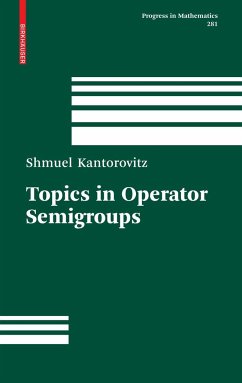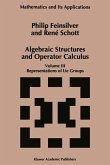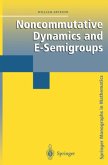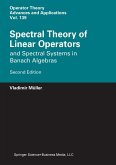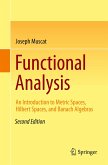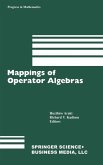This book is based on lecture notes from a second-year graduate course, and is a greatly expanded version of our previous monograph [K8]. We expose some aspects of the theory of semigroups of linear operators, mostly (but not only) from the point of view of its meeting with that part of spectral theory which is concerned with the integral representation of families of operators. This approach and selection of topics di?erentiate this book from others in the general area, and re?ect the author's own research directions. There is no attempt therefore to cover thoroughly the theory of semigroups of operators. This theory and its applications are extensively exposed in many books, from theclassicHille-Phillipsmonograph[HP]tothemostrecenttextbookofEngel and Nagel [EN2] (see [A], [BB], [Cl], [D3], [EN1], [EN2], [Fat], [G], [HP], [P], [Vr], and others), as well as in chapters in more general texts on Functional Analysis and the theory of linear operators (cf. [D5], [DS I-III], [Kat1], [RS], [Y], and many others).
From the reviews:
"This book is based on the author's lecture notes ... in which the more advanced parts concentrated on spectral representations. ... There is also a presentation of a well-known stability theorem for semigroups under countable spectral conditions. ... The increased variety of topics covered will make the book more useful ... . Other advantages are the inclusion of an index and some exercises, considerable extensions of the bibliography and the list of contents, and more attractive typesetting." (C. J. K. Batty, Mathematical Reviews, Issue 2010 k)
"The present graduate level text expands the previous lecture notes from the same author, Semigroups of operators and spectral theory ... . It begins with a succinct introduction to operator semigroups covering classical topics such as generators, the Hille-Yosida theorem, dissipative operators and the Lumer-Phillips theorem, the Trotter convergence theorem, exponential formulas, perturbation theory, Stone's theorem, and analytic semigroups. ... The text is also intended for second-year graduate students ... . it will be a valuable source for researchers working in this area." (G. Teschl, Monatshefte für Mathematik, Vol. 162 (4), April, 2011)
"This book is based on the author's lecture notes ... in which the more advanced parts concentrated on spectral representations. ... There is also a presentation of a well-known stability theorem for semigroups under countable spectral conditions. ... The increased variety of topics covered will make the book more useful ... . Other advantages are the inclusion of an index and some exercises, considerable extensions of the bibliography and the list of contents, and more attractive typesetting." (C. J. K. Batty, Mathematical Reviews, Issue 2010 k)
"The present graduate level text expands the previous lecture notes from the same author, Semigroups of operators and spectral theory ... . It begins with a succinct introduction to operator semigroups covering classical topics such as generators, the Hille-Yosida theorem, dissipative operators and the Lumer-Phillips theorem, the Trotter convergence theorem, exponential formulas, perturbation theory, Stone's theorem, and analytic semigroups. ... The text is also intended for second-year graduate students ... . it will be a valuable source for researchers working in this area." (G. Teschl, Monatshefte für Mathematik, Vol. 162 (4), April, 2011)
From the book reviews:
"This monograph is suitable for second-year graduate students, but it can be recommended also to any researcher interested in operator semigroups." (László Kérchy, Acta Scientiarum Mathematicarum (Szeged), Vol. 78 (1-2), 2012)
"The present graduate level text expands the previous lecture notes from the same author, Semigroups of operators and spectral theory ... . It begins with a succinct introduction to operator semigroups covering classical topics such as generators, the Hille-Yosida theorem, dissipative operators and the Lumer-Phillips theorem, the Trotter convergence theorem, exponential formulas, perturbation theory, Stone's theorem, and analytic semigroups. ... The text is also intended for second-year graduate students ... . it will be a valuable source for researchers working in this area." (G. Teschl, Monatshefte für Mathematik, Vol. 162 (4), April, 2011)
"This book is based on the author's lecture notes ... in which the more advanced parts concentrated on spectral representations. ... There is also a presentation of a well-known stability theorem for semigroups under countable spectral conditions. ... The increased variety of topics covered will make the book more useful ... . Other advantages are the inclusion of an index and some exercises, considerable extensions of the bibliography and the list of contents, and more attractive typesetting." (C. J. K. Batty, Mathematical Reviews, Issue 2010 k)
"This monograph is suitable for second-year graduate students, but it can be recommended also to any researcher interested in operator semigroups." (László Kérchy, Acta Scientiarum Mathematicarum (Szeged), Vol. 78 (1-2), 2012)
"The present graduate level text expands the previous lecture notes from the same author, Semigroups of operators and spectral theory ... . It begins with a succinct introduction to operator semigroups covering classical topics such as generators, the Hille-Yosida theorem, dissipative operators and the Lumer-Phillips theorem, the Trotter convergence theorem, exponential formulas, perturbation theory, Stone's theorem, and analytic semigroups. ... The text is also intended for second-year graduate students ... . it will be a valuable source for researchers working in this area." (G. Teschl, Monatshefte für Mathematik, Vol. 162 (4), April, 2011)
"This book is based on the author's lecture notes ... in which the more advanced parts concentrated on spectral representations. ... There is also a presentation of a well-known stability theorem for semigroups under countable spectral conditions. ... The increased variety of topics covered will make the book more useful ... . Other advantages are the inclusion of an index and some exercises, considerable extensions of the bibliography and the list of contents, and more attractive typesetting." (C. J. K. Batty, Mathematical Reviews, Issue 2010 k)

